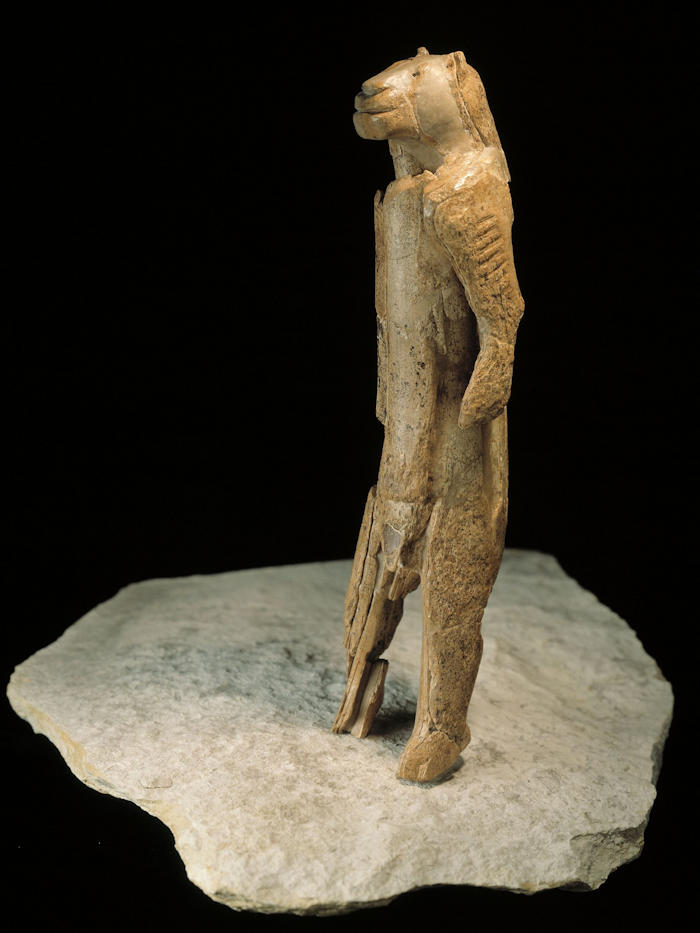70,000 Years Ago Something Happened That May Solve The Enduring Mystery Of Language Evolution
Scientists have tried to solve the enduring mystery of language evolution, and it seems something that happened 70,000 years ago may shed light on this ancient enigma.
According to the hypothesis called Romulus and Remus and coined by Dr. Vyshedskiy, a neuroscientist from Boston University, A genetic mutation that slowed down the development of the prefrontal cortex (PFC) in two or more children may have triggered a cascade of events leading to the acquisition of recursive language and modern imagination 70,000 years ago.
Numerous archeological and genetic evidence have already convinced most paleoanthropologists that the speech apparatus has reached essentially modern configurations before the human line split from the Neanderthal line 600,000 years ago. Considering that the chimpanzee communication system already has 20 to 100 different vocalizations, it is likely that the modern-like remodeling of the vocal apparatus extended our ancestors’ range of vocalizations by orders of magnitude. In other words, by 600,000 years ago, the number of distinct verbalizations used for communication must have been on par with the number of words in modern languages.

On the other hand, artifacts signifying modern imagination, such as composite figurative arts, elaborate burials, bone needles with an eye, and the construction of dwellings arose not earlier than 70,000 years ago. The half million-year-gap between the acquisition of the modern speech apparatus and modern imagination has baffled scientists for decades.
While studying the acquisition of imagination in children, Dr. Vyshedskiy and his colleagues discovered a temporal limit for the development of a particular component of imagination. It became apparent that modern children who have not been exposed to full language in early childhood never acquire the type of active constructive imagination essential for the juxtaposition of mental objects, known as Prefrontal Synthesis (PFS).
“To understand the importance of PFS, consider these two sentences: “A dog bit my friend” and “My friend bit a dog.” It is impossible to distinguish the difference in meaning using words or grammar alone since both words and grammatical structure are identical in these two sentences. Understanding the difference in meaning and appreciating the misfortune of the 1st sentence and the humor of the 2nd sentence depends on the listener’s ability to juxtapose the two mental objects: the friend and the dog.
Only after the PFC forms the two different images in front of the mind’s eye, are we able to understand the difference between the two sentences. Similarly, nested explanations, such as “a snake on the boulder to the left of the tall tree that is behind the hill,” force listeners to use PFS to combine objects (a snake, the boulder, the tree, and the hill) into a novel scene. Flexible object combination and nesting (otherwise known as recursion) are characteristic features of all human languages. For this reason, linguists refer to modern languages as recursive languages,” Dr. Vyshedskiy explains.
Unlike vocabulary and grammar acquisition, which can be learned throughout one’s lifetime, there is a strong critical period for the development of PFS and individuals not exposed to conversations with recursive language in early childhood can never acquire PFS as adults. Their language is always lacking understanding of spatial prepositions and recursion that depend on the PFS ability. In a similar manner, pre-modern humans would not have been able to learn recursive language as adults and, therefore, would not be able to teach recursive language to their own children, who, as a result, would not acquire PFS. Thus, the existence of a strong critical period for PFS acquisition creates a cultural evolutionary barrier for the acquisition of recursive language.

The second predicted evolutionary barrier was a faster PFC maturation rate and, consequently, a shorter critical period. In modern children the critical period for PFS acquisition closes around the age of five. If the critical period in pre-modern children was over by the age of two, they would have no chance of acquiring PFS. A longer critical period was imperative to provide enough time to train PFS via recursive conversations.
An evolutionary mathematical model, developed by Dr. Vyshedskiy, predicts that humans had to jump both evolutionary barriers within several generations since the “PFC delay” mutation that is found in all modern humans, but not in Neanderthals, is deleterious and is expected to be lost in a population without an associated acquisition of PFS and recursive language. Thus, the model suggests that the “PFC delay” mutation triggered simultaneous synergistic acquisition of PFS and recursive language.
This model calls for:
- two or more children with extended critical periods due to “PFC delay” mutation;
- these children spending a lot of time talking to each other;
- inventing the recursive elements of language, such as spatial prepositions;
- acquiring recursive-conversations-dependent PFS;
- teaching recursive language to their offspring.
The hypothesis is named after the celebrated twin founders of Rome, Romulus and Remus. Similar to the legendary Romulus and Remus, whose caregiver was a wolf, the real children’s caregivers had an animal-like communication system with many words, but no recursion. Their parents could not have taught them spatial prepositions or recursion; children had to invent recursive elements of language themselves. Such an invention of a new recursive language has been observed in contemporary children, for example among deaf children in Nicaragua.

“The acquisition of PFS and recursive language 70,000 years ago resulted in what was in essence a behaviorally new species: the first behaviorally modern Homo sapiens,” concludes Dr. Vyshedskiy. “This newly acquired power for the fast juxtaposition of mental objects in the process of PFS dramatically facilitated mental prototyping and led to a fast acceleration of technological progress. Armed with the unprecedented ability to mentally simulate any plan and equally unprecedented ability to communicate it to their companions, humans were poised to quickly become the dominant species.”
Humans acquired the ability to trap large animals and therefore gained a major nutritional advantage. As the population grew exponentially, humans diffused out of Africa and quickly settled in the most habitable areas of the planet, arriving in Australia around 50,000 years ago. These humans were very much like modern humans since they possessed both components of full language: the culturally transmitted recursive language along with the innate predisposition towards PFS, enabled by the “PFC delay” mutation.




